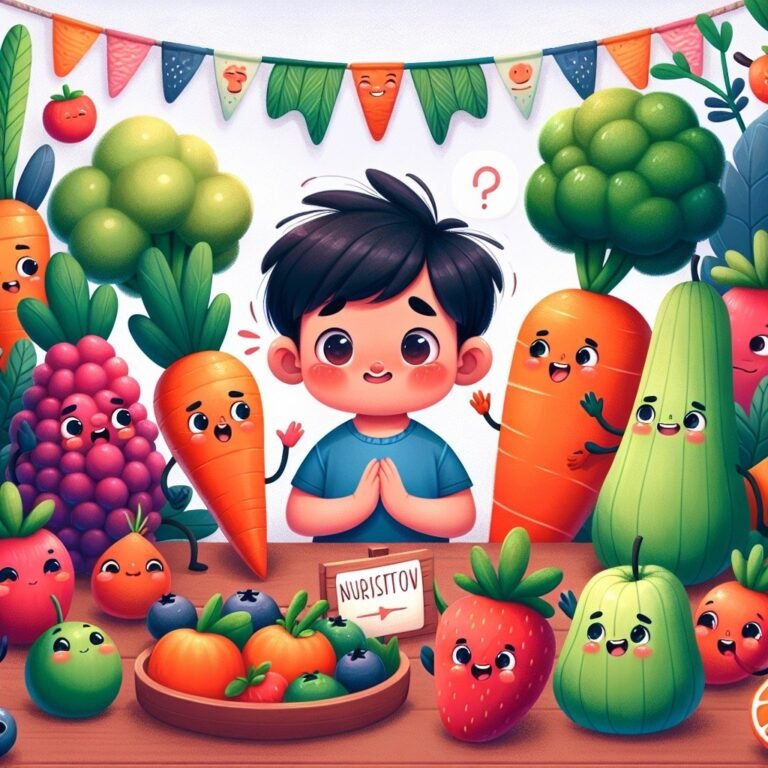Welcome to a fascinating exploration of Healthy Eating Facts For Kids! As an expert in the field of nutrition, you understand the importance of instilling healthy habits in children from a young age. This blog post is packed with fun and engaging facts about how nutritious foods can support children’s growth, development, and overall well-being. From the benefits of fruits and veggies to the importance of balanced meals and mindful eating, each section offers valuable insights that can help children make smarter food choices. By emphasizing the significance of Healthy Eating Facts For Kids, you have the opportunity to empower young minds to prioritize their health and set the stage for a lifetime of good nutrition. So dive in, explore the colorful world of healthy foods, and discover how you can make a positive impact on the lives of the next generation.
Healthy Eating Facts For Kids
1. Fruits and Veggies are Packed with Nutrients
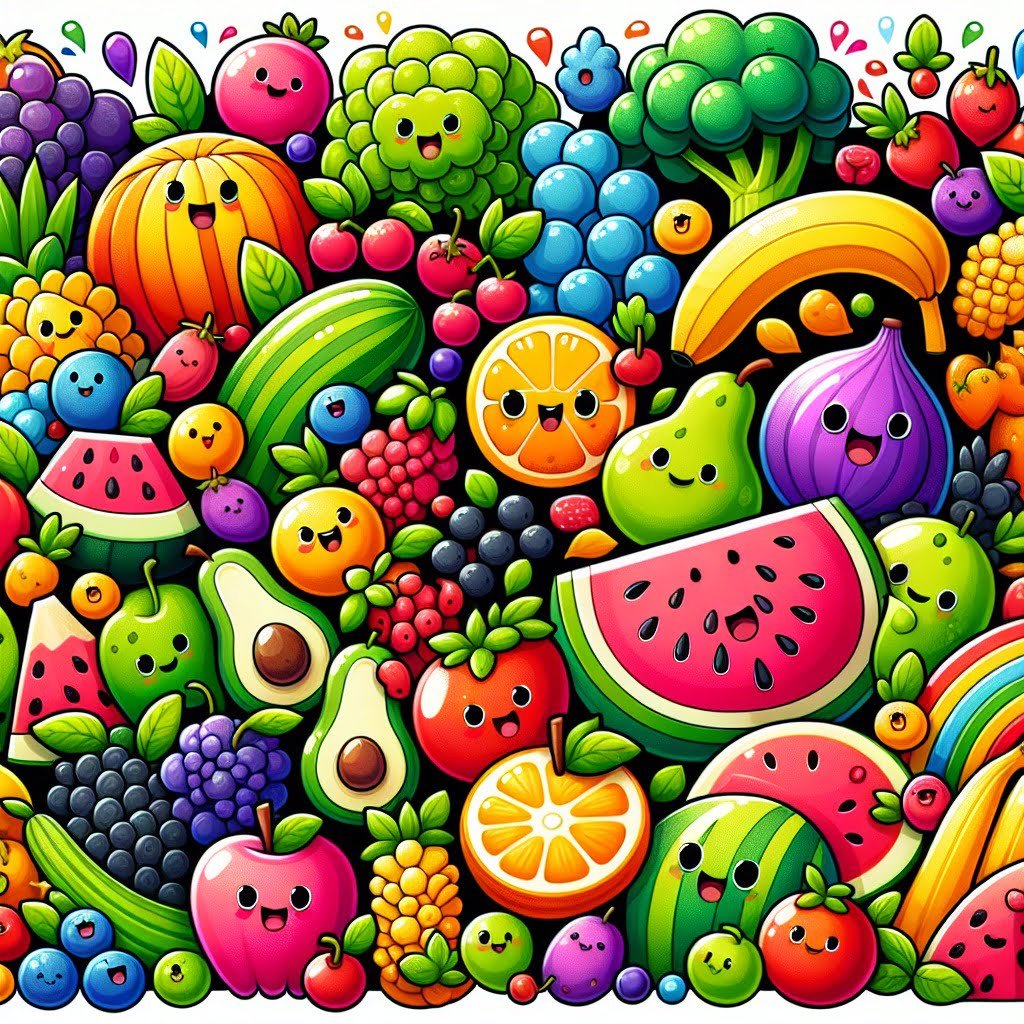
For younger kids: Eating fruits and veggies helps us grow big and strong!
For older kids: Fruits and vegetables are rich in essential vitamins, minerals, and fiber that are vital for optimal health and growth.
Detailed explanation:Healthy eating facts for kids emphasize the importance of consuming a variety of fruits and vegetables on a daily basis. These foods are packed with essential nutrients that are crucial for children’s growth and development.
Fruits and vegetables are rich in vitamins, minerals, fiber, and antioxidants that support overall health and well-being. For example, fruits like oranges, strawberries, and kiwi are excellent sources of vitamin C, which plays a key role in immune function and skin health. Leafy greens such as spinach and kale are high in vitamin K, which is important for blood clotting and bone health. By incorporating a colorful array of fruits and vegetables into their diets, kids can ensure they are getting a wide range of nutrients that are essential for their growing bodies.
In addition to vitamins and minerals, fruits and vegetables also provide fiber, which is important for digestive health. Fiber helps to prevent constipation and regulate bowel movements, keeping kids feeling full and satisfied. This can be particularly beneficial in preventing overeating and maintaining a healthy weight.
Overall, the abundance of nutrients found in fruits and vegetables make them essential components of a balanced diet for kids. By encouraging children to eat a rainbow of fruits and vegetables each day, parents can help ensure that their little ones are getting the vital nutrients they need to thrive and grow. Emphasizing these healthy eating facts for kids can set the foundation for a lifetime of good nutrition habits.
Healthy Eating Facts For Kids
2. Water Helps Keep Your Body Hydrated

For younger kids: Drinking water is important to keep our bodies happy and healthy.
For older kids: Water is crucial for maintaining proper hydration, regulating body temperature, and aiding in digestion and nutrient absorption.
Detailed explanation:One of the most important healthy eating facts for kids to understand is the role that water plays in keeping their bodies hydrated. Hydration is essential for overall health and well-being, as water helps to regulate body temperature, transport nutrients and oxygen to cells, and remove waste products from the body.
For children, staying properly hydrated is especially important because their bodies are still growing and developing. Dehydration can lead to a range of negative consequences, including headaches, fatigue, and difficulty concentrating. By drinking an adequate amount of water each day, kids can help ensure that their bodies have the fluids they need to function properly.
In addition to drinking water, kids can also stay hydrated by eating foods with high water content, such as fruits and vegetables. These foods not only provide hydration, but also essential vitamins, minerals, and fiber that are important for overall health.
Parents can help their kids stay hydrated by encouraging them to drink water throughout the day, especially during meals and physical activity. Teaching kids about the importance of staying hydrated and providing them with easy access to water can help instill healthy hydration habits early on.
Overall, understanding the role of water in keeping the body hydrated is a crucial part of promoting healthy eating habits for kids. By making sure they drink enough water and eat foods with high water content, parents can help their children stay healthy and energized.
Healthy Eating Facts For Kids
3. Whole Grains Provide Long-lasting Energy
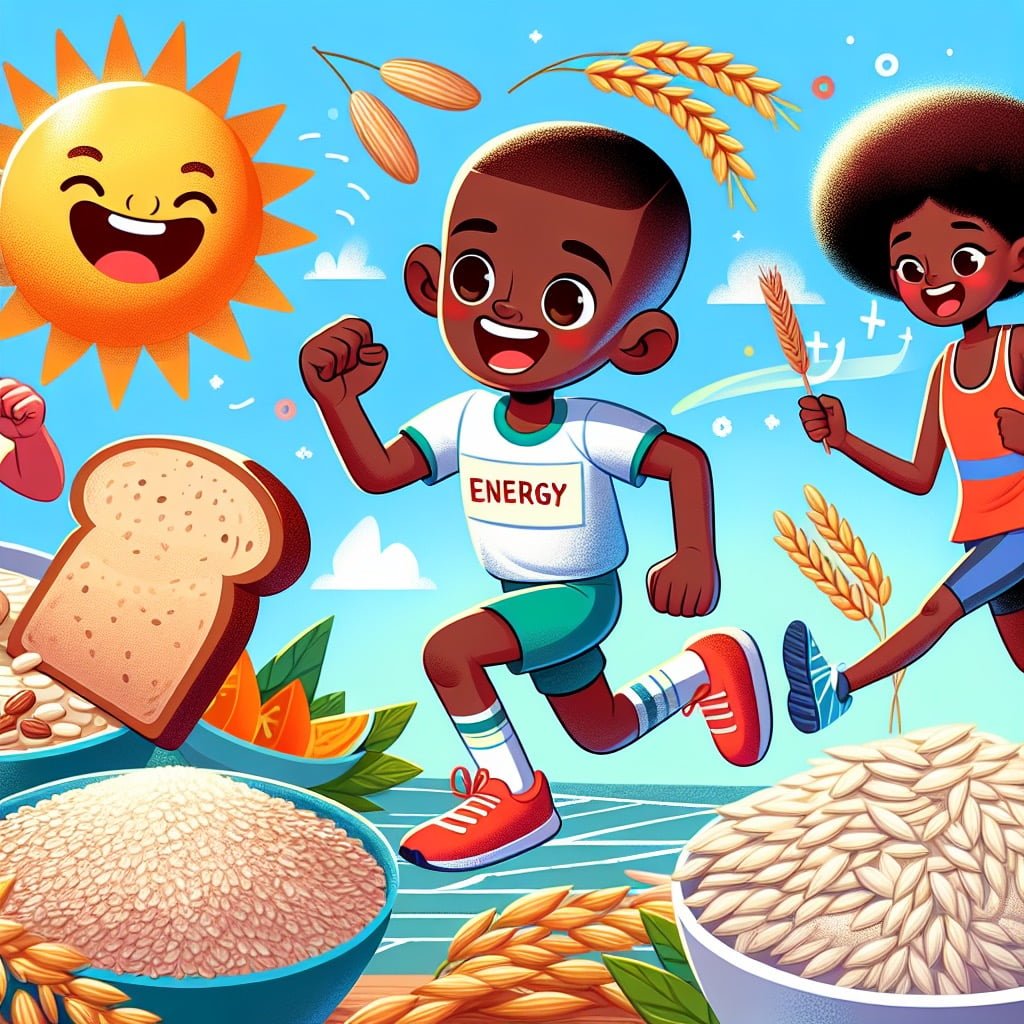
For younger kids: Whole grains give us the energy to run, jump, and play all day!
For older kids: Whole grains such as brown rice and oats offer sustained energy and are rich in fiber, vitamins, and minerals to keep us feeling full and satisfied.
Detailed explanation:Whole grains are an essential component of a healthy diet, especially for kids who need sustained energy throughout the day. When we talk about healthy eating facts for kids, ensuring they consume whole grains is crucial for their overall well-being.
Unlike refined grains, such as white bread and white rice, whole grains contain all parts of the grain – the bran, germ, and endosperm. This means they are packed with nutrients, including fiber, vitamins, and minerals that are essential for growth and development.
One of the key benefits of whole grains is their ability to provide long-lasting energy. This is due to the fact that whole grains are digested more slowly than refined grains, which helps to stabilize blood sugar levels and prevent rapid spikes and crashes in energy. As a result, kids who eat whole grains as part of their diet are able to maintain consistent energy levels throughout the day, helping them to focus better in school and excel in their activities.
Incorporating whole grains into a child’s diet can be as simple as swapping out refined grains for whole grain alternatives. For example, opting for whole wheat bread instead of white bread, or choosing brown rice over white rice. Additionally, whole grain options like oats, quinoa, and barley can be delicious additions to meals and snacks. By prioritizing whole grains in a child’s diet, parents can ensure that their kids have the sustained energy they need to thrive.
In conclusion, when it comes to healthy eating facts for kids, whole grains play a crucial role in providing long-lasting energy and supporting overall health and well-being. By making whole grains a staple in their diet, parents can help their children to stay energized, focused, and healthy.
Healthy Eating Facts For Kids
4. Balanced Meals Include Protein, Carbs, and Fats
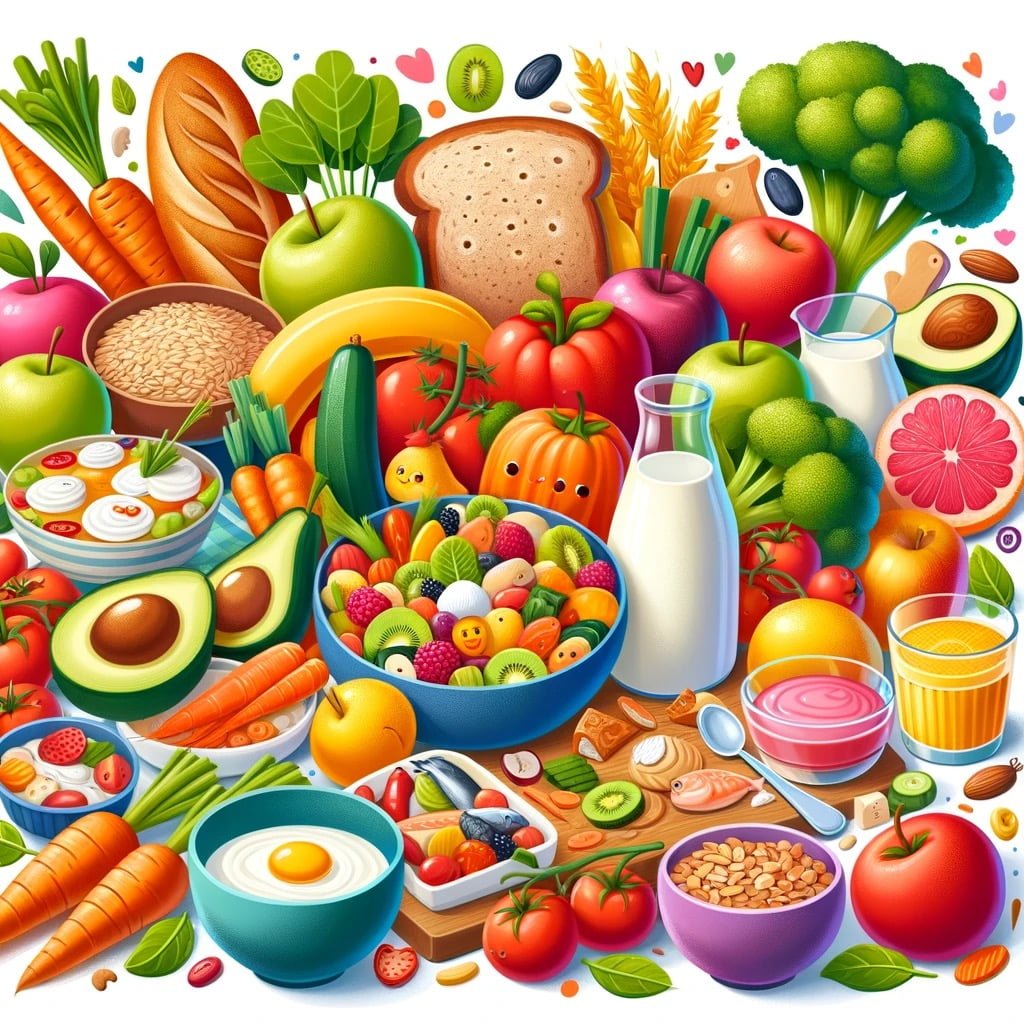
For younger kids: Eating a mix of different foods helps keep our bodies strong and healthy.
For older kids: A balanced meal with protein, carbohydrates, and healthy fats provides the necessary nutrients for growth, repair, and energy production.
Detailed explanation:One of the most important Healthy Eating Facts For Kids is that balanced meals should include protein, carbs, and fats. Each of these macronutrients plays a crucial role in supporting a child’s growth and development.
Protein is essential for building and repairing tissues, as well as supporting the immune system. Good sources of protein for kids include lean meats, poultry, fish, eggs, dairy products, beans, and nuts. Including protein in each meal helps children feel full and satisfied, while also providing the necessary building blocks for strong muscles and bones.
Carbohydrates are the body’s primary source of energy, especially for growing children who are constantly active. Healthy sources of carbohydrates include whole grains, fruits, vegetables, and legumes. These foods provide fiber, vitamins, and minerals that are essential for overall health and well-being.
Fats are also important for kids, as they help absorb fat-soluble vitamins, provide energy, and support brain development. Healthy fats can be found in foods like avocados, nuts, seeds, olive oil, and fatty fish. Including a mix of healthy fats in a child’s diet can help improve cognitive function and overall brain health.
By including a balance of protein, carbs, and fats in each meal, parents can ensure that their children are getting the nutrients they need to thrive. Teaching kids about Healthy Eating Facts For Kids early on can set them up for a lifetime of good eating habits and optimal health.
Healthy Eating Facts For Kids
5. Yogurt is Good for Your Gut Health

For younger kids: Eating yogurt helps our tummies stay happy!
For older kids: Yogurt contains beneficial probiotics that support digestive health and promote a strong immune system.
Detailed explanation:Yogurt is a popular food known for its numerous health benefits, particularly for improving gut health. Gut health refers to the balance of microorganisms that live in the digestive tract, which play a crucial role in digestion, immunity, and overall health. Yogurt is packed with probiotics, which are live bacteria and yeasts that are beneficial for the digestive system. These probiotics help to restore the balance of good bacteria in the gut, which can be disrupted by factors such as stress, poor diet, and antibiotics.
For children, maintaining a healthy gut is essential for proper growth and development. Research has shown that children who consume yogurt regularly have a lower risk of developing conditions such as allergies, asthma, and eczema. The probiotics in yogurt also help to strengthen the immune system, making children less susceptible to infections and illnesses.
In addition to probiotics, yogurt is also a good source of calcium, protein, and vitamins. Calcium is important for building strong bones and teeth, while protein is essential for growth and development. Vitamins such as B12 and riboflavin are important for overall health and wellbeing.
When incorporating yogurt into a child’s diet, it is important to choose varieties that are low in added sugars and artificial ingredients. Opt for plain yogurt and add natural sweeteners such as honey or fresh fruit for flavor. By including yogurt as part of a balanced diet, children can enjoy the benefits of improved gut health and overall wellbeing.
In conclusion, yogurt is a nutritious and delicious food that can have a positive impact on gut health in children. By including yogurt in their diet, parents can help support their child’s growth, development, and immune function. Healthy eating facts for kids should include the benefits of yogurt as a key component of a well-rounded diet.
Healthy Eating Facts For Kids
6. Nuts and Seeds Are Nutrient Powerhouses
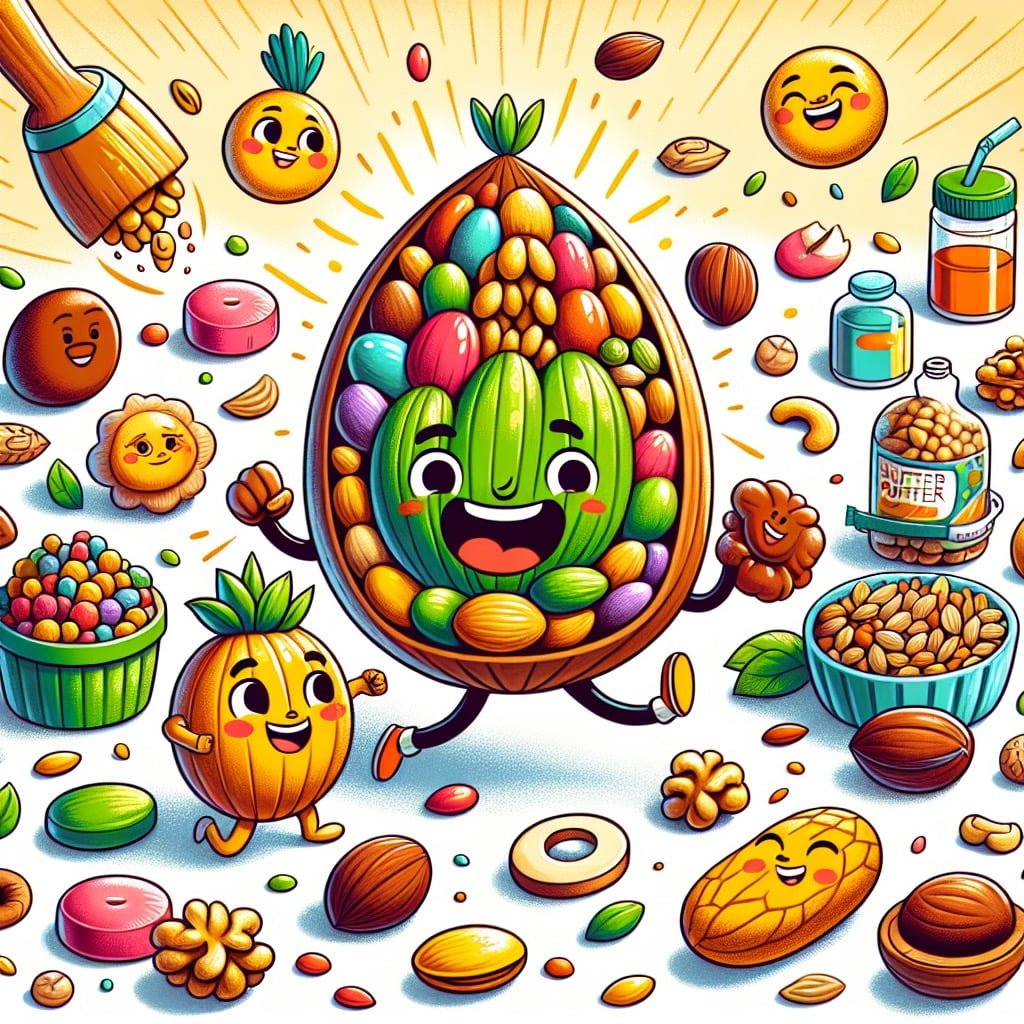
For younger kids: Nuts and seeds give us energy and make for yummy snacks!
For older kids: Nuts and seeds are rich sources of healthy fats, protein, fiber, vitamins, and minerals—all of which are essential for our overall well-being.
Detailed explanation:Nuts and seeds are indeed nutrient powerhouses that can provide numerous health benefits, especially for kids. These foods are packed with essential vitamins, minerals, healthy fats, and protein, making them a great addition to a child’s diet.
One of the key reasons why nuts and seeds are considered nutrient powerhouses is because they are rich in heart-healthy fats, such as omega-3 fatty acids. These healthy fats play a crucial role in brain development and function, making them essential for growing children. Additionally, nuts and seeds are excellent sources of fiber, which can help regulate digestion and promote overall gut health in kids.
Furthermore, nuts and seeds are also high in antioxidants, which can help protect the body from cellular damage and reduce the risk of chronic diseases. Antioxidants are particularly important for kids as they are still developing their immune systems and need all the support they can get to stay healthy.
Incorporating nuts and seeds into a child’s diet can be easily done by sprinkling them on top of yogurt or oatmeal, adding them to smoothies, or simply enjoying them as a snack on their own. However, it is important to be mindful of portion sizes, as nuts and seeds are calorie-dense foods. Encouraging kids to eat a variety of nuts and seeds can ensure they are getting a wide range of nutrients that are essential for their growth and development.
In conclusion, nuts and seeds are indeed nutrient powerhouses that can offer a wide array of health benefits for kids. By including them in a balanced diet, parents can ensure that their children are getting the essential nutrients they need for optimal health and development.
Healthy Eating Facts For Kids
7. Eating Colorful Foods is Good for Your Health
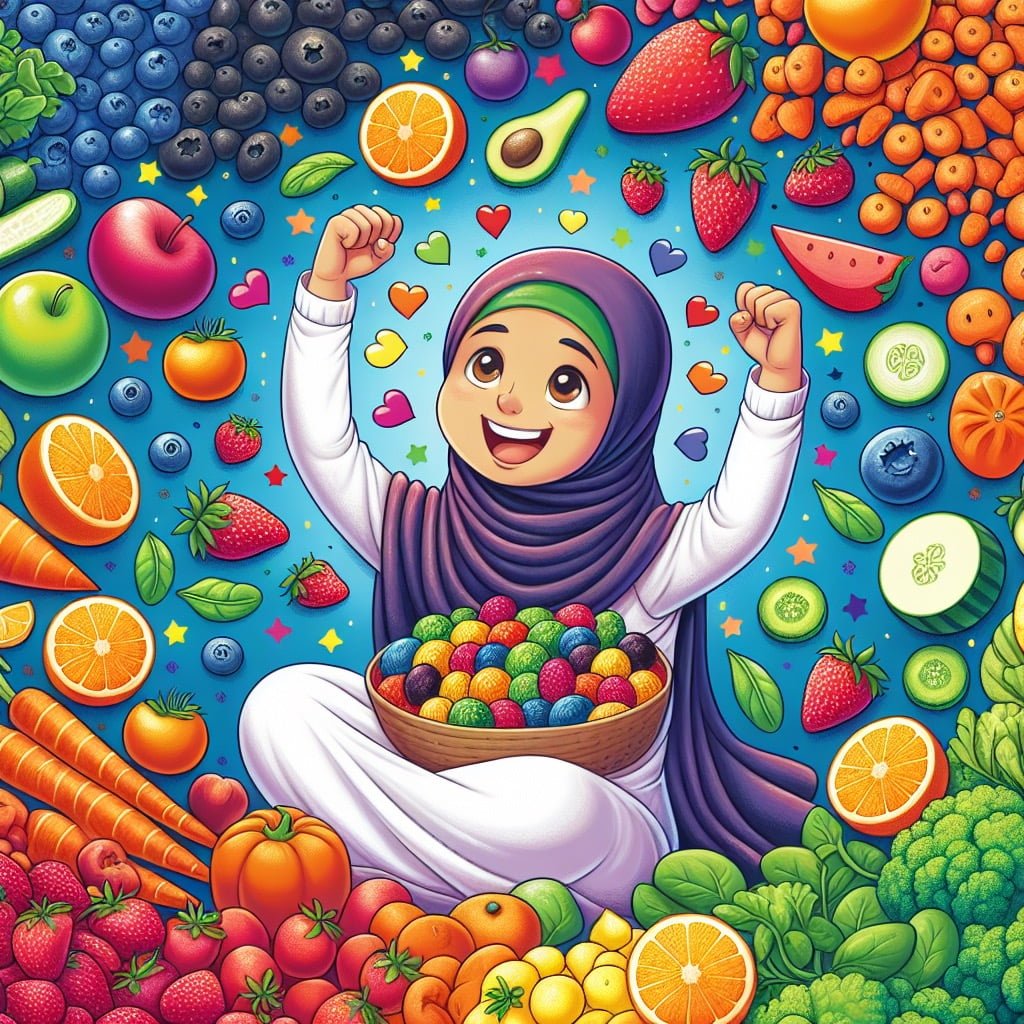
For younger kids: Eating foods in lots of different colors is fun and good for our bodies!
For older kids: Colorful fruits and vegetables contain various beneficial compounds, such as antioxidants, that help combat oxidative stress and promote overall health.
Detailed explanation:Eating colorful foods is not only visually appealing, but it also provides a wide range of health benefits. When we consume a variety of colorful fruits and vegetables, we are actually consuming a diverse array of vitamins, minerals, and antioxidants that are essential for our overall health and well-being. This concept, known as “eating the rainbow,” encourages us to incorporate foods of different colors into our diets in order to ensure that we are getting a broad spectrum of nutrients.
For kids, incorporating a variety of colorful foods into their diets is particularly important as their growing bodies need a wide range of nutrients to support their development. By educating children about healthy eating facts for kids and the importance of consuming a rainbow of foods, we can instill lifelong healthy eating habits that will benefit them in the long run.
Fruits and vegetables come in a rainbow of colors, with each color group providing unique health benefits. For example, red fruits and vegetables like tomatoes and strawberries are rich in lycopene, which has been linked to a lower risk of certain types of cancer. Orange foods like carrots and sweet potatoes are high in beta-carotene, which is essential for good vision and skin health. Green leafy vegetables like spinach and kale are loaded with vitamins A and K, as well as iron and calcium.
Incorporating colorful foods into a child’s diet can be as simple as adding slices of bell peppers to a sandwich, tossing berries into a bowl of yogurt, or serving up a side of steamed broccoli with dinner. By making healthy eating fun and engaging for kids, we can help them develop a positive relationship with food and set them up for a lifetime of good health.
Healthy Eating Facts For Kids
8. Snacking on Fresh Produce is a Tasty and Healthy Choice

For younger kids: Snacking on fruits and veggies is like having a nature’s candy break!
For older kids: Incorporating fresh produce as snacks provides a delicious and nutritious way to fuel our bodies with vitamins, minerals, and antioxidants.
Detailed explanation:When it comes to ensuring children are getting proper nutrition, healthy eating facts for kids cannot be emphasized enough. Snacking on fresh produce is not only a tasty choice for kids, but also a very healthy one.
Fresh produce, such as fruits and vegetables, are packed with essential vitamins and minerals that are crucial for a child’s growth and development. These nutrient-rich foods provide children with the energy they need to fuel their active lifestyles. By incorporating more fresh produce into their diet, kids can receive a wide range of nutrients that are essential for their overall health.
In addition to vitamins and minerals, fresh produce also contains fiber, which is important for maintaining a healthy digestive system. Fiber helps to regulate bowel movements and can prevent constipation, a common issue among children. By snacking on fruits and vegetables, kids can increase their fiber intake and promote better digestive health.
Furthermore, fresh produce is low in calories and high in water content, making it a great choice for kids who are looking to maintain a healthy weight. By opting for fruits and vegetables as snacks, children can satisfy their hunger and cravings without consuming excessive amounts of unhealthy fats and sugars.
Overall, snacking on fresh produce is a fantastic way for kids to boost their nutrition and support their overall health. By incorporating more fruits and vegetables into their daily routine, parents can help their children develop healthy eating habits that will benefit them for years to come. Healthy eating facts for kids should include the importance of snacking on fresh produce as a delicious and nutritious choice.
Healthy Eating Facts For Kids
9. Limiting Sugary Treats Supports Your Oral Health
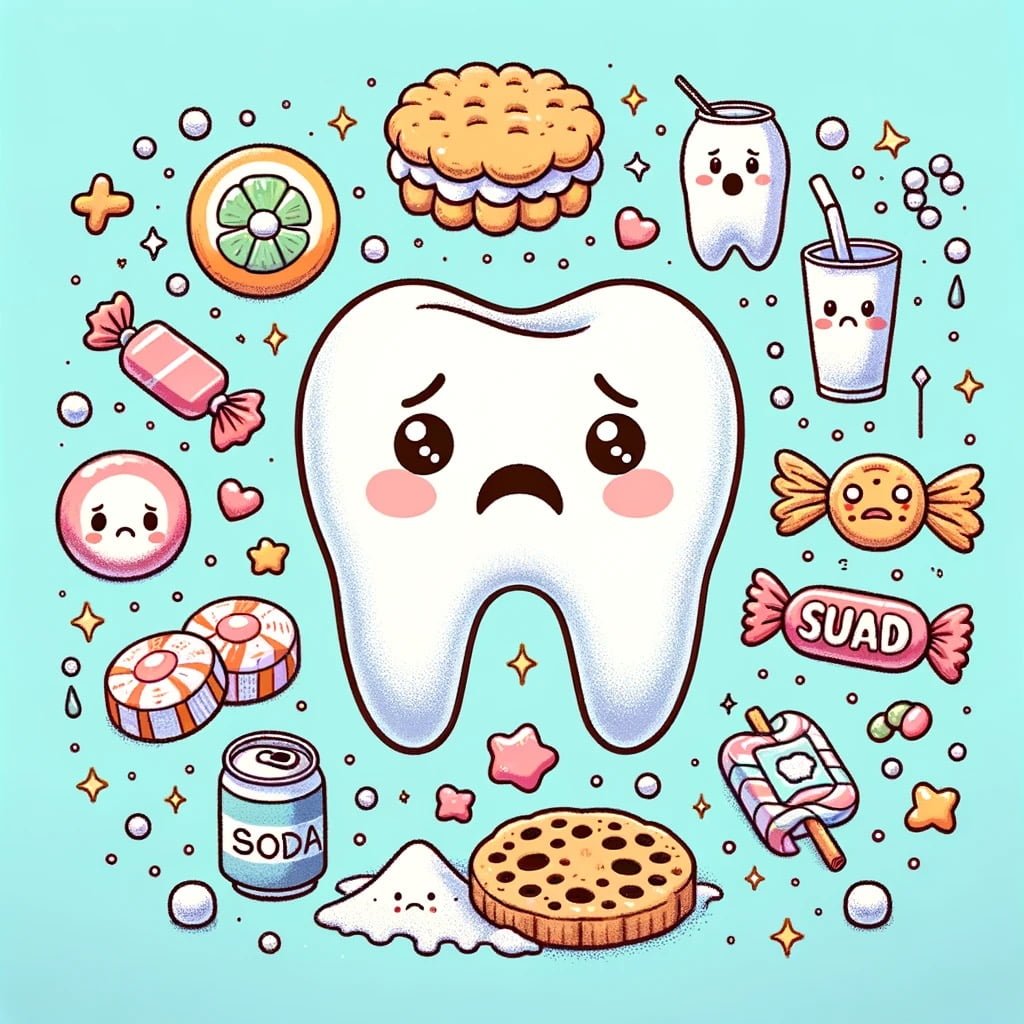
For younger kids: Too much sugar can make our teeth sad.
For older kids: Consuming sugary treats in moderation helps maintain oral health and reduces the risk of dental issues like cavities and gum disease.
Detailed explanation:When it comes to maintaining good oral health, limiting sugary treats is essential. Consuming high amounts of sugary foods and drinks can lead to tooth decay, cavities, and gum disease. Children, in particular, are at a higher risk for these issues because their teeth are still developing.
By following healthy eating facts for kids, parents can help prevent dental problems and promote overall well-being. Encouraging children to choose healthier snacks, such as fruits, vegetables, and nuts, can have a positive impact on their oral health. These foods are not only low in sugar but also rich in vitamins and minerals that are beneficial for teeth and gums.
When sugary treats are consumed, the bacteria in the mouth feed on the sugars and produce acids that attack the enamel of the teeth. Over time, this can weaken the enamel and lead to cavities. By limiting the intake of sugary treats, parents can help protect their children’s teeth from damage.
In addition to reducing sugary snacks, it is also important to establish good oral hygiene habits, such as brushing and flossing regularly, and visiting the dentist for check-ups and cleanings. By combining healthy eating habits with proper dental care, parents can set their children up for a lifetime of good oral health.
In conclusion, limiting sugary treats and following healthy eating facts for kids are crucial steps in maintaining optimal oral health. By making smart food choices and practicing good oral hygiene, parents can help their children have strong and healthy teeth for years to come.
Healthy Eating Facts For Kids
10. Eating Slowly Helps Your Digestion

For younger kids: Chewing our food well helps our tummies feel good!
For older kids: Eating slowly and chewing food thoroughly aids in proper digestion, allowing our bodies to absorb nutrients more effectively and preventing digestive discomfort.
Detailed explanation:Healthy eating facts for kids include the importance of eating slowly for better digestion. When children eat quickly, they tend to swallow large chunks of food without properly chewing it. This can lead to various digestive issues such as bloating, gas, and indigestion.
When we eat slowly, we give our bodies enough time to properly break down the food we consume. Chewing food slowly and thoroughly helps to release more saliva, which contains enzymes that kickstart the digestion process. Additionally, eating slowly allows our stomachs to signal to our brain when we are full, preventing us from overeating.
For kids, this can be especially important as they are still developing their digestive systems. By teaching them to eat slowly and mindfully, parents can help them establish healthy eating habits early on. Encouraging kids to focus on their food, chew each bite slowly, and take breaks between bites can promote better digestion and overall health.
Incorporating healthy eating facts for kids into their daily routine, such as eating meals together as a family without distractions like television or smartphones, can also help reinforce the importance of mindful eating. By emphasizing the connection between eating slowly and improved digestion, parents can set their children up for a lifetime of better digestive health and overall wellness.
Did You Know?
Did you know that choosing healthy foods can help you have more energy, feel happier, and stay strong and fit? It’s true! Your body loves when you nourish it with the right foods.
Summary of Healthy Eating Facts For Kids
As an expert in the field of nutrition, I am excited to share with you the importance of teaching kids about healthy eating. By exploring the world of healthy eating through fun facts and engaging activities, you can instill lifelong habits in your children that will benefit them both physically and mentally. Not only will they develop a love for nutritious foods and a respect for their bodies, but they will also be setting themselves up for a lifetime of good health and wellness.
By delving deeper into the topic of healthy eating for kids, you can uncover a wealth of information that will not only benefit your own family, but also future generations. Understanding the benefits of different foods and how they can impact health is crucial in today’s society where childhood obesity and related health issues are on the rise. By arming yourself with knowledge and awareness, you can make informed choices that will have a positive impact on your children’s well-being.
Moreover, teaching kids about healthy eating in a fun and exciting way can make the process enjoyable for both parents and children. By turning healthy eating into a journey of discovery and exploration, you can create lasting memories and habits that will benefit your family for years to come. So, take the time to read more about healthy eating facts for kids and see how you can make a difference in your children’s lives. Trust me, the benefits far outweigh the effort it takes to learn more about this important topic.
Sources and additional information for Healthy Eating Facts For Kids
WikipediaBritannicaFood and Agriculture Organization of the United Nations (FAO)EpicuriousFood NetworkSerious EatsSaveurCooking LightThe KitchnBon AppétitEatright.org (Academy of Nutrition and Dietetics)Wine SpectatorFood NetworkThe Spruce EatsBBC Good FoodEpicuriousAllrecipesThe KitchnBon AppétitSerious Eats
